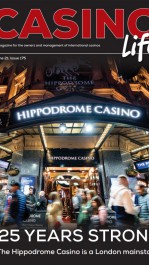LONDON, 25th MAY 2021: GambleAware has today released new interactive maps designed to help identify both take up and reported demand for treatment and support services for gambling harms across Great Britain (GB).
The charity’s annual GB treatment and support survey[1] produced a nationally representative overview of reported demand and usage of treatment and support, as well as an estimate of the prevalence of gambling harms. This survey outlined differences in gambling participation, usage and reported demand for treatment and support, broken down by area. Based on this research, GambleAware has produced interactive maps to assist in understanding these geographical differences, and to help inform responses by local authorities and wards.
The interactive maps indicate where certain areas have a higher take up of gambling treatment and support, as well as where there is a greater reported demand for, or awareness of, these services. It is key to note that existing efforts to address gambling harms may influence levels of treatment and support uptake, as well as that the maps are based on a single set of data and
cannot provide an exact result. GambleAware recommends that local authorities use the maps in conjunction with local data and information relevant to gambling harms.
In areas where there is a reportedly higher reported demand for gambling treatment or support, GambleAware encourages local authorities to do more to promote the existing help available through the National Gambling Treatment Service.
Alison Clare, Research, Information and Knowledge Director at GambleAware, said: “We want to assist local authorities and services in delivering the best possible treatment and support for gambling harms in their area. These new interactive maps can be used to identify shortfalls between treatment and support services and prevalence of gambling participation and harms, which can be used to inform local responses. The existing support available through the National Gambling Treatment Service can be used to help address these shortfalls.”
About the research
- The maps present a visual representation of a YouGov study conducted in 2020, which explored the usage of, and reported demand for, treatment and support services among gamblers and those affected by another’s gambling.
- In order to produce maps at local authority and ward level, YouGov used multilevel regression and post-stratification (MRP) to estimate gambling prevalence and reported demand for treatment and support services by taking observations from a sample of participants and applying these to the wider population. MRP is based on the premise that similar people hold similar views and exhibit similar behaviours, irrespective of where they live.
- Dr Justin Van Dijk from University College London created the maps, commissioned by GambleAware.
- All= data, unless otherwise stated, are from YouGov Plc.
- Total sample size was 18,879 adults.
- Fieldwork was undertaken between 19th November – 11th December 2020.
- The survey was carried out online.
- The figures have been weighted and are representative of all GB adults (aged 18+) by age gender, ethnicity, social grade and region.
- The estimated prevalence of problem gambling, indicated by a PGSI of 8+, in Great Britain is currently estimated to be between 0.7% and 2.4%[1].
- The research was conducted by YouGov on behalf of GambleAware.

















